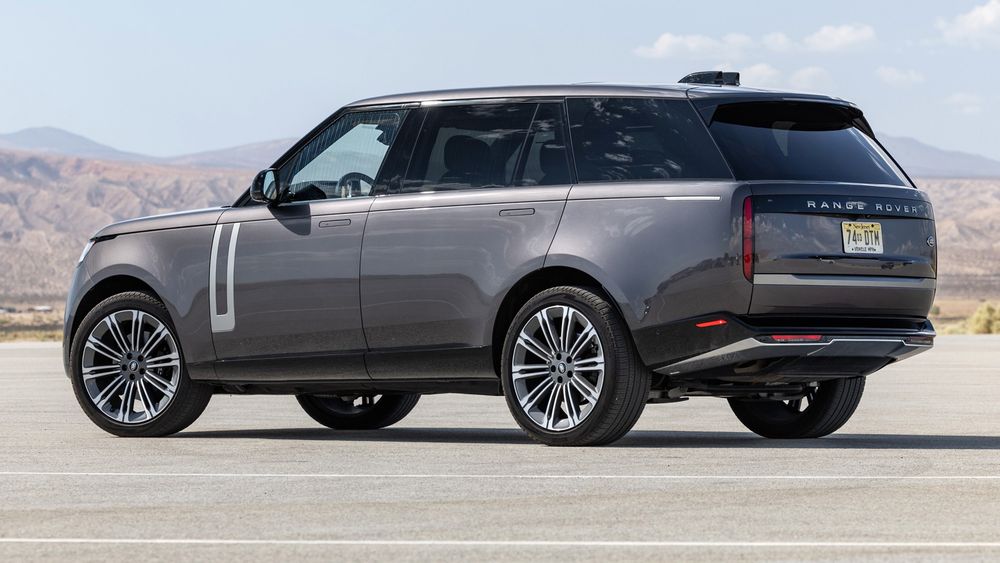Jaguar Land Rover Stops Sending New Vehicles to U.S. as Tariff Fallout Expands
The company is pausing shipments through April while it figures out how to deal with Trump’s 25 percent import tariff.
Jaguar Land Rover (JLR) has stopped shipments to the U.S. for one month as it figures out how to respond to President Trump’s 25-percent tariff on imported vehicles. “The USA is an important market for JLR’s luxury brands. As we work to address the new trading terms with our business partners, we are enacting our short-term actions including a shipment pause in April,” it said in a statement.
0:00 / 0:00
The U.S. accounts for about 25 percent of JLR’s global sales. It is the company’s biggest single market for the full-size Range Rover, Range Rover Sport, and the Land Rover Defender, all of which command high prices and deliver big profits. Last financial year (to the end of March 2025) these three models alone accounted for 67.8 percent of total JLR sales worldwide.
Unlike BMW and Mercedes-Benz, however, both of which have large plants in South Carolina and Alabama building a variety of SUVs for both America and global markets, JLR has no U.S. manufacturing presence. It is therefore much more exposed to the negative impact of the Trump tariffs than its rivals. And there appear no easy options for JLR should the Trump administration stick to its hard line on imports.
Sources in Britain say JLR considered building a plant in the U.S. before Trump’s first presidency but chose to construct it in the European Union instead. Located in Nitra, Slovakia, and opened in 2018, the plant has a capacity of 150,000 vehicles a year and produces Land Rover Defender and Discovery models.
Building a new plant in U.S. would not only cost more than $1 billion—money JLR needs to spend on keeping its Land Rover product portfolio competitive and to relaunch Jaguar—but it would take at least two years to complete. And it would leave the automaker, which sold a total of almost 429,000 vehicles worldwide last financial year, with an expensive overcapacity problem. Beyond that, the extraordinarily capricious nature of the current Trump administration, and the increasing likelihood of challenges to the tariff rulings from Congress and the courts, mean the company has few certainties upon which a decision about investing in a U.S. manufacturing can be made.
For that reason, the Trump tariffs are also a major headache for rest of the $120 billion British auto industry. The Brits may no longer own the companies that produce their storied marques (JLR is owned by India’s Tata Group, Mini and Rolls-Royce by BMW, Bentley by Volkswagen, Lotus by Geely, and specialists such as Aston Martin, McLaren, and Morgan by an assortment of foreign sovereign wealth funds and other investors.) But those companies between them last year produced more than 905,000 vehicles, with one in six of them shipped to the U.S.
I can’t remember a time when I wasn’t fascinated by cars. My father was a mechanic, and some of my earliest memories are of handing him wrenches as he worked to turn a succession of down-at-heel secondhand cars into reliable family transportation. Later, when I was about 12, I’d be allowed to back the Valiant station wagon out onto the street and drive it around to the front of the house to wash it. We had the cleanest Valiant in the world.
I got my driver’s license exactly three months after my 16th birthday in a Series II Land Rover, ex-Australian Army with no synchro on first or second and about a million miles on the clock. “Pass your test in that,” said Dad, “and you’ll be able to drive anything.” He was right. Nearly four decades later I’ve driven everything from a Bugatti Veyron to a Volvo 18-wheeler, on roads and tracks all over the world. Very few people get the opportunity to parlay their passion into a career. I’m one of those fortunate few.
I started editing my local car club magazine, partly because no-one else would do it, and partly because I’d sold my rally car to get the deposit for my first house, and wanted to stay involved in the sport. Then one day someone handed me a free local sports paper and said they might want car stuff in it. I rang the editor and to my surprise she said yes. There was no pay, but I did get press passes, which meant I got into the races for free. And meet real automotive journalists in the pressroom. And watch and learn.
It’s been a helluva ride ever since. I’ve written about everything from Formula 1 to Sprint Car racing; from new cars and trucks to wild street machines and multi-million dollar classics; from global industry trends to secondhand car dealers. I’ve done automotive TV shows and radio shows, and helped create automotive websites, iMags and mobile apps. I’ve been the editor-in-chief of leading automotive media brands in Australia, Great Britain, and the United States. And I’ve enjoyed every minute of it. The longer I’m in this business the more astonished I am these fiendishly complicated devices we call automobiles get made at all, and how accomplished they have become at doing what they’re designed to do. I believe all new cars should be great, and I’m disappointed when they’re not. Over the years I’ve come to realize cars are the result of a complex interaction of people, politics and process, which is why they’re all different. And why they continue to fascinate me.Read More

